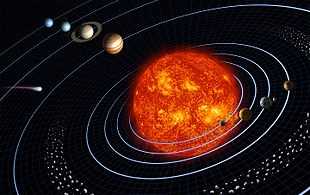Solar System, technical
| Picture dictionary | |
|---|---|
|
|
Prerequisites
- Background knowledge prerequisite - None (except general knowledge and a wish to know more)
- NB This is meant for people without a background in Science and could therefore said to be a "foundation" level course or at a pre-university level. It would also be useful at level 1.
- Mathematical knowledge - Aimed at people with no background in mathematics - only knowledge of arithmetic (addition, subtraction, multiplication and division). Anything else will be provided within the course.
Introduction
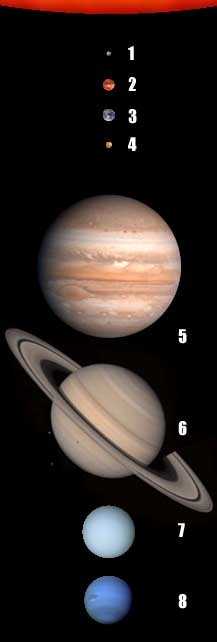
The Solar System's planets
- Introduction to the Planets/Introduction
- Classical planets
- Comets - characteristics of comets.
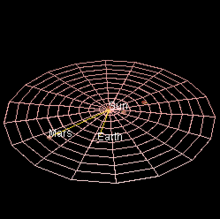
The orbits of the inner planets: Mercury, Venus, Earth, and Mars
At right, the planets are shown in their order moving outward from the Sun.
They are scaled according to size but not to distance.
The Sun System
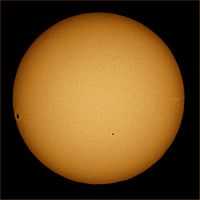
Mercury is the small dark dot in front of the Sun at the lower right center.
The Inner Solar System
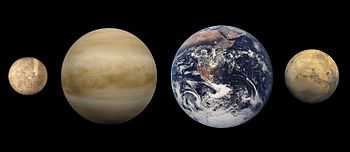
The terrestrial planets - Mercury Venus, Earth and Mars
- Mercury (1)
- Venus (2)
- Earth (3)
- Moon
- Quasi-satellites of Earth (NEOs with resonance to the Earth's orbit)
- Mars (4)
- Asteroid belt
The Outer Solar System
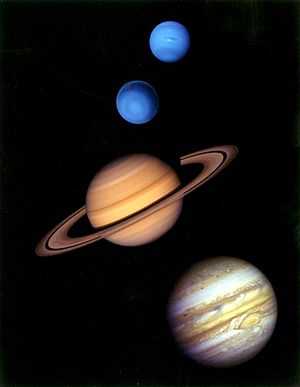
The giant planets
- Jupiter (5)
- Saturn (6)
- Titan
- other moons
- Uranus (7)
- Uranus' moons
- Neptune (8)
- Neptune's moons
- Kuiper belt (Pluto, Charon, Eris, Quaoar and the rest)
Beyond the Solar System
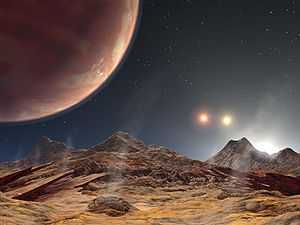
Sunset over a planet in a triple star system
External links
This article is issued from Wikiversity - version of the Monday, August 17, 2015. The text is available under the Creative Commons Attribution/Share Alike but additional terms may apply for the media files.
